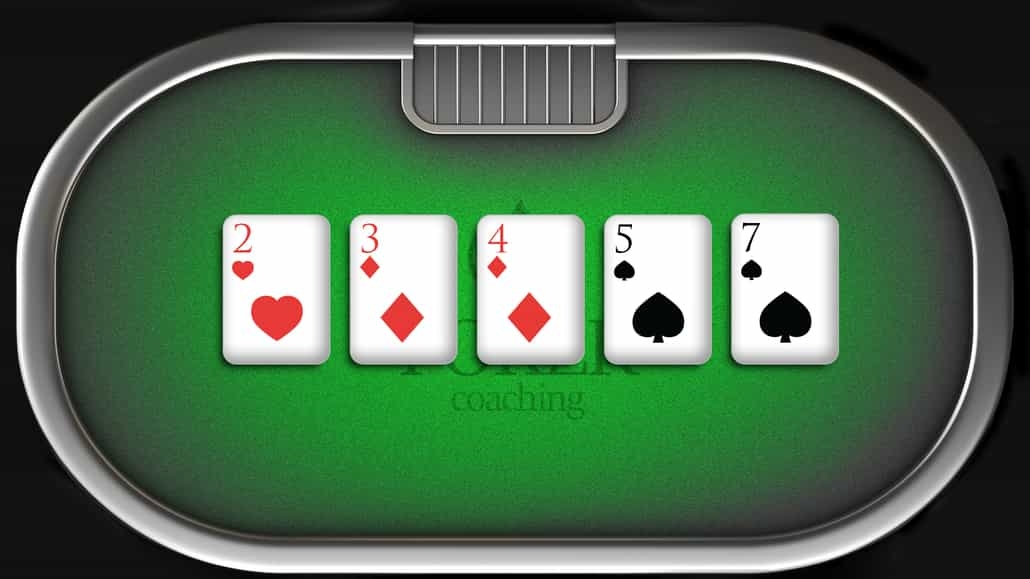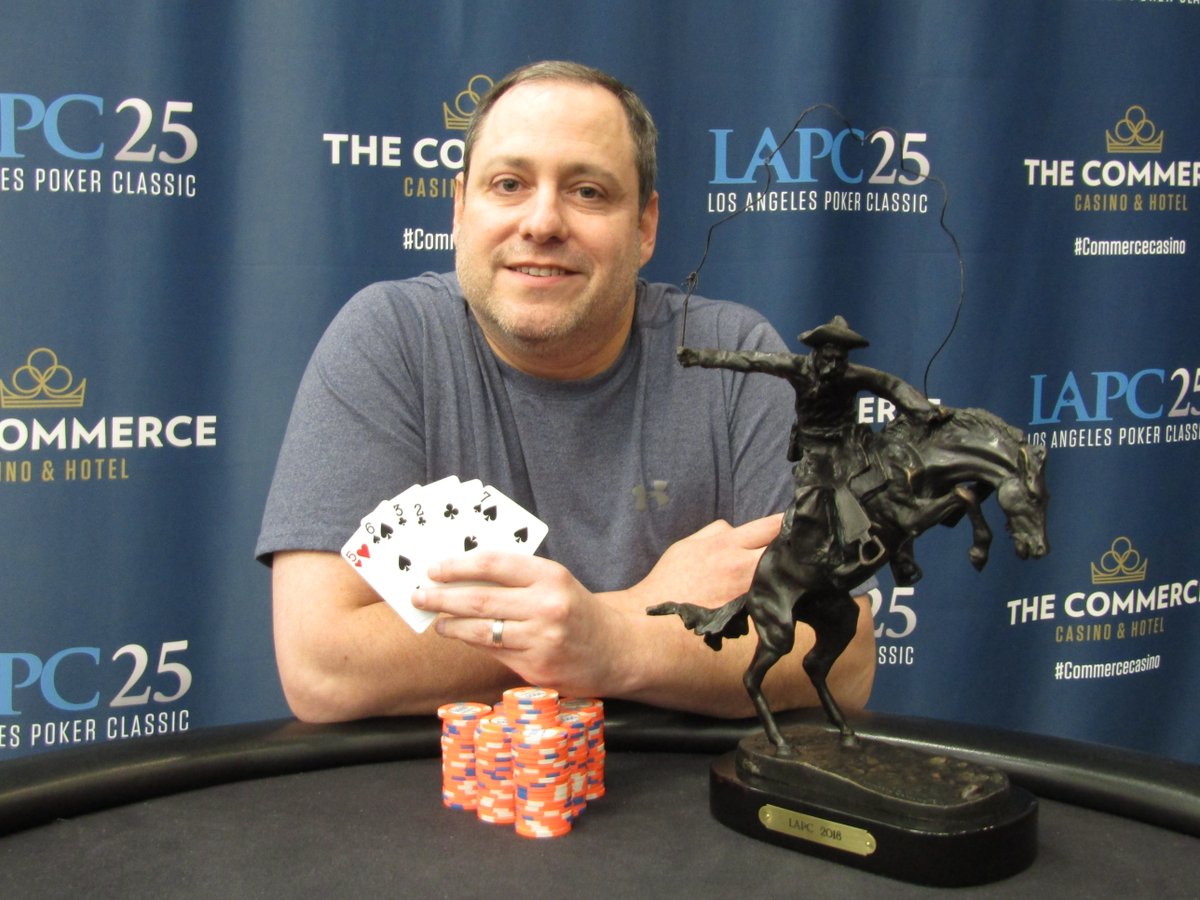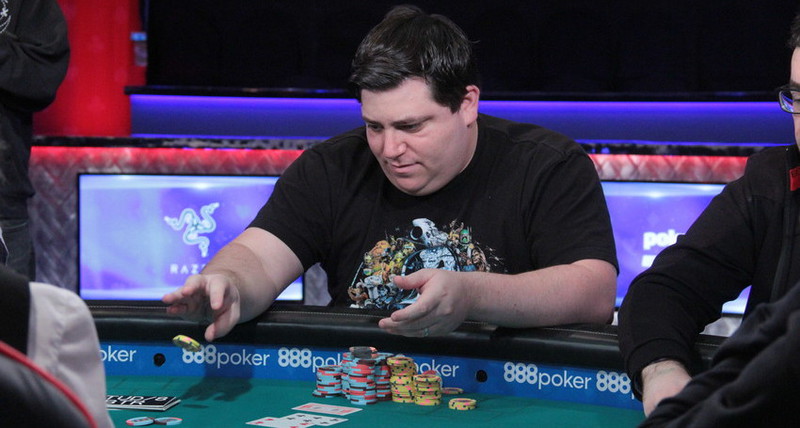Poker 2 7 Triple Draw
- Regle Poker 2-7 Triple Draw
- Free Draw Poker Video Poker
- 2 7 Triple Draw Poker Online
- Poker Games 2-7 Triple Draw
The WSOP offers several tournaments of 2-7 Triple Draw, also referred to as 2-7 Lowball Triple Draw. The buy-ins range from $1,500 to $10,000. In 2018, the $10,000 2-7 Triple Draw event at the WSOP in. Deal and First Betting Round. After the binds have been paid, the dealer passes out five cards face.
2-7 Triple Draw
2-7 Triple Draw (henceforth called 'Triple Draw' and also known as 'Lowball') is a pretty form of poker where the goal is to make the worst possible five card hand. The game can only be played with a maximum of six players in a hand since there aren't enough cards in the deck to ensure more could be accommodated. Players are dealt five cards and a round of betting occurs. After the first round of betting, players remaining in the hand select the cards they wish to discard and draw new cards. Another round of betting occurs. Players remaining in the hand repeat the discard/draw process for a second time. Another round of betting and then a third draw round (hence the name 'triple draw'). After the third draw, there is a final round of betting. If any players remain in the hand, a showdown occurs.
The stakes double after the second betting round much in the same way the stakes double after the turn in a limit hold'em game. So in a $1/$2 game, the bets in the first two rounds are $1 and in the last two rounds are $2. There is a no-limit form of this game in which players are awarded only one draw. That is a very different game from Triple Draw which uses limit betting. This article focuses exclusively on Triple Draw.
The best hand in Triple Draw is 23457. The 'low' hand you're trying to make in Triple Draw differs from the low hands you make in Razz, Stud Hi/Lo and Omaha Hi/Lo in two ways:
Both of these points should be read and re-read several times if you are new to Triple Draw. The 'nut low' in Stud and Omaha hands is A2345 which is known as the 'wheel'. In Triple Draw, this is not even close to the nut low, but it's technically not awful hand either. Since the Ace is only a high card, you have an Ace low, not a straight. In other words, 2345A is a better hand than 23446 because 'Ace low' is lower than a pair of fours. At any rate, neither of these hands are likely to be any good at a showdown.
It is also important to note that hands are ranked from the highest low card down. For example, 23569 (an 'nine low') is not as good as 34568 (an 'eight low'). In the event of a tie between two players, you just move onto the next card. So if both players have an 'eight low' (a somewhat common occurrence in Triple Draw), you just look to see whose next highest card is lower. For example, 23678 loses to 34568 because the first player has an 'eight-seven low' while the next player has an 'eight-six low'. Got it? Okay, good. Let's move on.
Winning Triple Draw Hands
Novice Triple Draw players lose money at the game mostly because they fail to understand what makes a good hand, what makes a decent hand, and what makes a bad hand. Any seven low will almost always be a winner. Just remember that 34567 isn't a seven low, it's a straight. An eight low will usually be good enough to win the pot. Nine lows are tricky, sometimes they're enough to win the pot, sometimes they'll lose to a seven low, an eight low, or even a better nine low. A ten low can sometimes be good enough to win. Higher than this (jack low or worse) and you're starting to press your luck.
Starting Hands and Position
As with any poker game, the importance of the quality of your starting hand depends on position. In early position, you should have a 'pat hand' (meaning you don't need to draw any cards because you were dealt a strong hand like a seven low or an eight low) or a hand that is just one card away from being strong. The only discard-two hands that I would raise with from early position are 234, 235, 236, 237, and 238.
In late position, the importance of your starting hand goes down considerably. In games that are folded to me on the button, I generally always raise regardless of my cards. Oftentimes, both of the blinds will fold and you'll win the pot right then and there. If one of the blinds call, you've got a couple of things you can do, but we'll get to that in a moment.


Position is critical in this game. If you have position on your opponent(s), you get to see how many cards they discard before having to make this decision yourself. This is incredibly valuable. For instance, suppose you have 9 7 5 3 2, a nine low. If your opponent discards two or more cards, you could consider just standing pat as it's somewhat unlikely they'll draw to a better hand. If they discard just one card, you probably need to ditch the Nine and hope to make a better low.
Opponents
Since you don't get to see any of your opponents' cards in this poker variant, it's important to learn as much as you can about their play by paying close attention to their showdown hands. Most players play very straight-forward in Triple Draw. This is especially the case in smaller stakes games where players are concerned only with their cards and not with their opponents. Try to figure out if your opponents are aggressive or passive and whether or not they always play straight-forward or are capable of running bluffs. Also take note of what hands they're taking to the showdown. Are they betting or calling bets with a jack low? Are they 'just' check-calling with an eight low? If so, they probably don't have a very good understanding of hand values which is something you can exploit.
Bad Players
Bad players are clueless and will probably keep calling bets and drawing even when it's obvious to everyone that they've got a slim chance of winning the pot. The name of the game is simple against these players: make a good hand and then punish them with value bets while they try to chase a better hand. Don't even bother trying to bluff them as they'll never fold.
Straight-Forward Players
These players are plentiful and easy to profit from. All these players are concerned with is making a good low that they can take to a showdown. This is highly exploitable. For example, say an aggressive but straight-forward player raises in the cut-off when you are in the button. Sometimes (not always) it can be smart to re-raise these players. The plan is to stand pat and keep betting trying to represent a made hand. This is called 'snowing'. If they discard two cards on the first draw, this plan has a pretty good chance of working by forcing them to fold at some point in the hand. If they discard just one card, they are pretty likely to make a strong hand at some point. You can counter this by discarding one yourself and seeing what they do on the second draw. If they stand pat, you're toast. The jig is up. Discard however many you need to in hopes of fluking your way into a strong hand and be prepared to fold when they lead out during the next betting round. However, if they discard one card again, you can stand pat representing that you got the card you wanted on the last draw. When they check, bet. They'll either fold or call. If they call, it's the same routine again on the third draw. You just have to hope they don't draw a card good enough to make them want to look you up on the showdown, but chances are they won't.
Note that 'snowing' works a lot better with hands like 55668 where you hold a lot of their outs.
Advanced Players
You won't run into too many of these types unless you're playing for higher stakes. These players realize what not many do: that Triple Draw is less about the cards than everyone thinks. You have to be careful against these players because they are capable of running bluffs and representing strong hands. Advanced players also commonly check-raise for value on the last betting round when they draw to a strong hand. This is why I strongly recommend checking behind on most rivers unless you've got a monster (a seven low or an eight low). When you hold something like a ten low, your opponent either made a better hand on the third draw or he didn't. If he did, he might very well check hoping to check-raise. If he didn't, he's not going to call your bet anyway. In other words, there's really no value in betting on the last betting round with a beatable hand like a ten low because rarely is someone going to call you with a hand that cannot beat yours.
Bluffing and Value-Betting

You can win a lot of pots by bluffing in Triple Draw, especially in pots being contested between just you and one other player. For example, let's say you're out of position on the final betting round. You draw one card and your opponent draws one card. You pair an Eight so your hand is worthless. Bet! Chances are your opponent didn't catch a very good card either so they might just fold. Anytime you're out of position when the draw is one-card, one-card on the third draw, I would bet with strong hands and total garbage and check-call with mediocre hands like King-low. Unless your opponent is super passive and never going to bet unless they filled up a monster on the end. In this case, you should bluff with a wider range and check-call with a smaller range.
A common situation in Triple Draw is when a player stands pat on the second draw and checks to you after you also stood pat. I think you should almost always bet in this situation. One of two things will be the case: you'll have a really strong hand that you should bet anyway or you'll have something that you're not sure whether or not is good (a bad eight low, a nine low or maybe a ten low). By betting with these hands, you're representing a strong hand. There are two benefits to this: a.) you might actually be able to get your opponent to fold or call and then discard one and b.) you set up an easy check-behind on the river. Some players will stand pat after the second draw with something like a ten low. When they see their opponent stand pat and bet, they might think, 'damn, this guy must have a better hand than me, I better [fold or call and ditch the ten]'. Either one of those things is great for you especially if you're holding something like a worse ten low!
2-7 (Deuce to Seven) Triple Draw Lowball is a poker game in which the low poker hand wins the pot at showdown. In other words, it is a form of ‘Lowball’. It is a ‘draw’ game, meaning that you are dealt five cards, and may discard from zero to five of them on the draw, and receive that number of replacement cards. In Triple Draw, each player has the opportunity to draw three times, though you may ‘stand pat’ (not discard any cards) on any or all of the draws.
How to Play 2-7 Triple Draw
First, it’s important to understand that the hand rankings are different in 2-7 Triple Draw than in other low games. In 2-7 Triple Draw, straights and flushes count against your low hand, and aces are always high. So the best possible hand is: 7, 5, 4, 3, 2. The following 2-7 hands (not a complete list) are ranked from least powerful (#1, which will rarely win the pot) to most powerful (#16, the nuts):
- J, 7, 4, 3, 2 (all the same suit – a flush)
- 8, 7, 6, 5, 4 (a straight)
- 7, 6, 5, 4, 3 (a lower straight)
- 5, 5, 5, 6, 3
- 2, 2, 7, 6, 5
- A, 9, 6, 4, 2
- A, 8, 7, 4, 2
- A, 5, 4, 3, 2 (not a straight – ace-high)
- K, J, 8, 7, 4
- T, 7, 5, 4, 3
- T, 6, 5, 4, 3
- T, 6, 5, 4, 2
- 9, 7, 6, 4, 3
- 8, 6, 4, 3, 2
- 7, 6, 4, 3, 2
- 7, 5, 4, 3, 2
Regle Poker 2-7 Triple Draw
Blinds
Draw games are played using forced bets known as blinds, with the player sitting to the left of the dealer button posting a small blind, and the player to their left posting the big blind. The small blind is usually equal to half the size of the big blind. Lowball is also sometimes played with an ante, which is a small forced bet posted by each player in addition to the blinds.
The Deal

Each player is dealt five cards face down. There is then a round of betting, where you have the option to either call, raise, or fold. Players still left in the hand after the first round of betting now have the opportunity to draw. That is, each player selects which (if any) cards he wishes to discard by clicking on them. By clicking a second time on a card that you have planned to discard, you remove it from the discard set. You can discard all five cards if you wish. If you feel that you already have a strong hand, you can opt to ‘Stand Pat’. This means that you are choosing not to discard any of your cards. Discarding continues around the table clockwise. When it is your turn to discard, you press the button to confirm you wish to discard the selected cards.
After the first draw, there is another round of betting, beginning with the first active player to the left of the button.
There are two more draws with a round of betting following each one, resulting in three draws total, and four rounds of betting. If more than one player is still left in the hand at this point, a showdown takes place, with the player holding the best hand taking the pot.
So the sequence of action is:
- Five cards dealt to each player
- Betting round #1, beginning with player to left of big blind
- Draw #1, beginning with player to left of button
- Betting round #2, beginning with player to left of button
- Draw #2, beginning with player to left of button
- Betting round #3, beginning with player to left of button
- Draw #3, beginning with player to left of button
- Betting round #4, beginning with player to left of button
- Showdown (if necessary)
In draw games, it is possible for more cards to be needed than are remaining in the deck. In this case, the cards are reshuffled, and play continues using the new deck.
Showdown – Determining the Winner
The player with the best five-card 2-7 hand wins the pot. After the pot is awarded to the best hand, a new game of 2-7 Triple Draw is ready to be played.
Free Draw Poker Video Poker
If two or more hands have the same value, the pot is equally split among them. There is no rank of suit for the purposes of awarding the pot. Please remember, this is different from other forms of low or high/low poker, where an ace can be played either high or low. In 2-7 Triple Draw, an ace is always the highest card.
Learn How to Play 2-7 Triple Draw for Free
2 7 Triple Draw Poker Online
If you are unfamiliar with 2-7 Triple Draw poker, we recommend you try the game out first to get a feel for how it’s played. You are always welcome to play on free poker tables at the poker rooms, and sharpen your skills before playing real money poker.
Poker Games 2-7 Triple Draw
